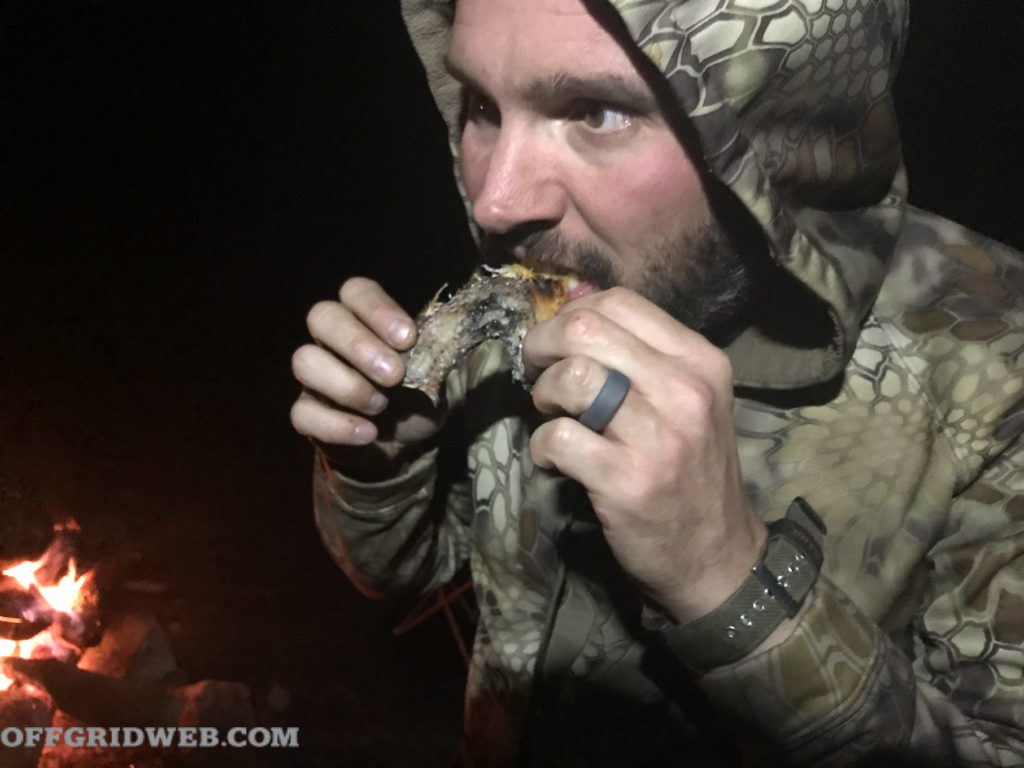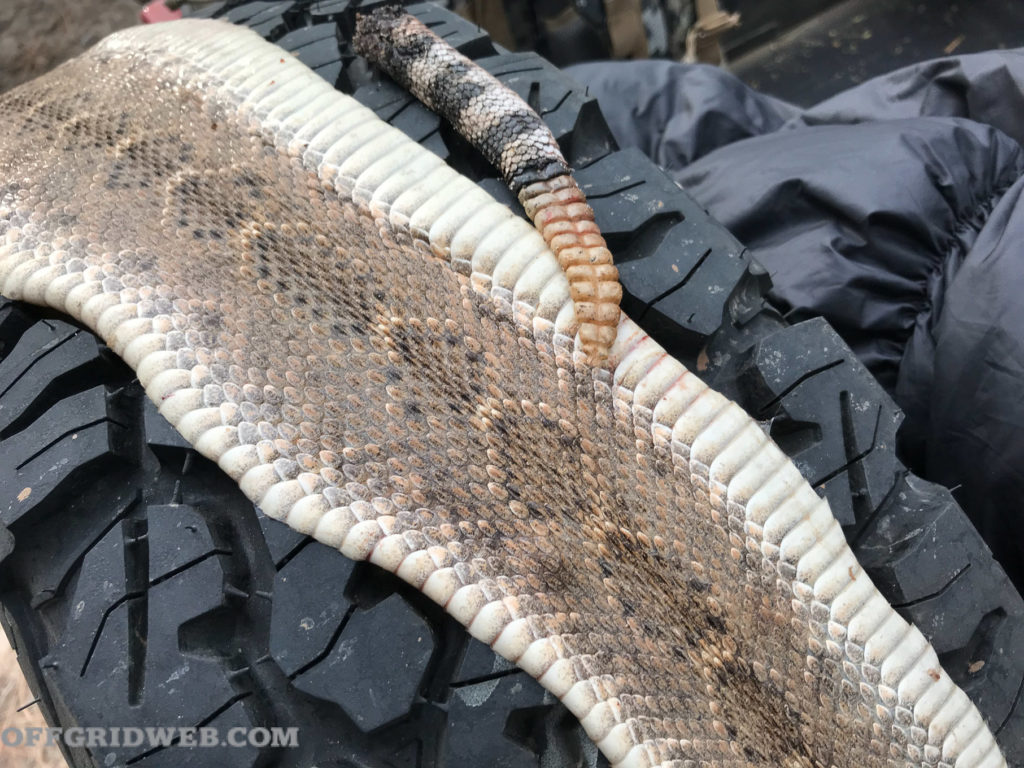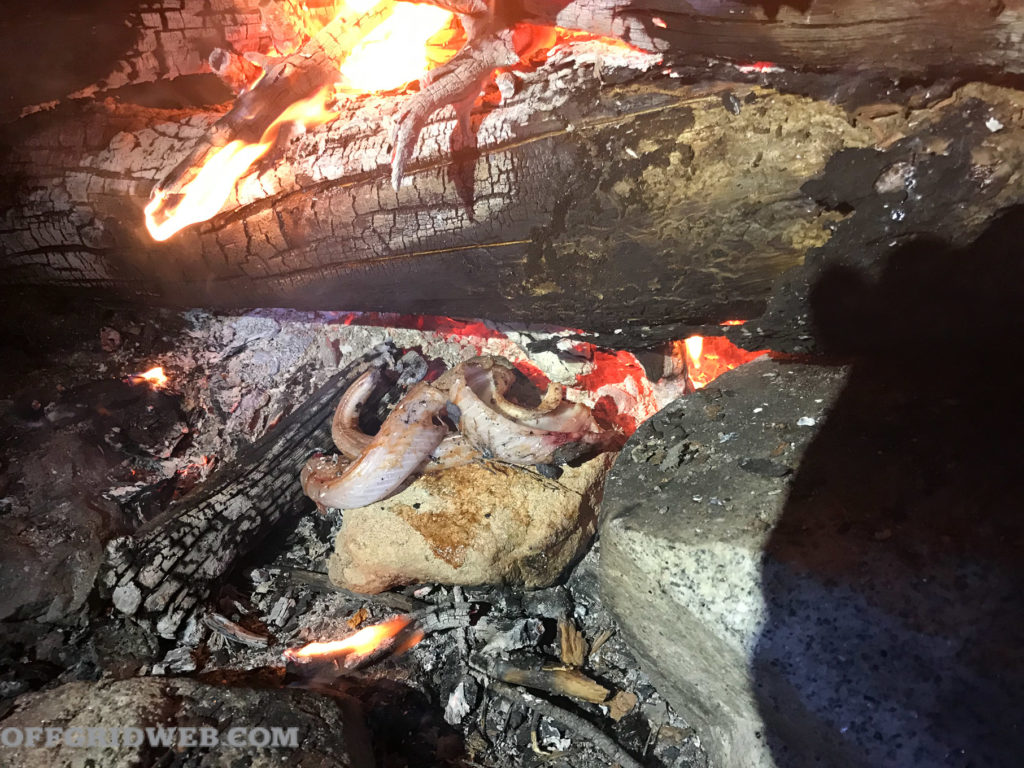Maybe you’re a survivalist who fantasizes about retreating into nature and living off the land after civilization collapses, or perhaps you’re a hard-core camper who prefers to exist in the outdoors even before doomsday has come. Maybe you’ve stumbled across this article, and now your curiosity has been piqued as to how to survive in the wild. This guide will teach you the dos (and importantly, the donts) of hunting reptiles in the wild — which reptiles to hunt, which to avoid, how to identify and catch them, and finally, how to cook them. For anyone who sees lunches of lizards or suppers of snakes in their future, this article is essential.
Warning!
This article is meant to be a general overview and not a detailed guide on eating reptiles and amphibians. Always check all local game regulations before attempting to hunt reptiles or amphibians and work with an experienced herpetologist before attempting to prepare any for consumption.
Which Reptiles Should You Hunt?
Lizards: If you’re traveling in the Southern Hemisphere, you’ll need to steer clear from certain venomous species of lizard; in the United States, the only one to be aware of is the Gila monster. All other lizards native to the U.S., in theory, are safe to eat. Certainly, there’s a risk of bacteria and parasites, which we’ll discuss in more detail in the section on how to cook reptiles.
Most lizards you’ll encounter are relatively small and won’t offer a great deal of meat. You’ll need to hunt for many of them in order to get your fill. This isn’t the most efficient strategy, since lizards tend to be quick and agile, making them difficult to trap or spear. Beggars certainly can’t be choosers for those living off the land, but if you have the option, you’re likely to have better luck with other species.

Snakes: So long as you cut off the head, you won’t be at risk for ingesting snake venom. However, it’s best to stay away from the venomous species (cottonmouths, copperheads, coral snakes, and rattlesnakes, in the U.S.), because of the risks of getting bit while trying to hunt them.
If you’re a reptile-lover, you may find it difficult to kill a snake that looks like one you’ve had as a pet. Many pet snakes aren’t native to the U.S., and you won’t encounter them in the wild, but if you keep snakes at home, think about whether you’d be willing to hunt an animal that slithers around like your beloved pet!
Turtles: Turtles are some of the easiest reptiles to hunt because they’re so slow-moving and can’t easily dart away from you like a lizard. Certain species of turtles, notably box turtles, subsist on diets of mushrooms, which may include fungi that are poisonous to humans. When you eat the turtle, you also are ingesting whatever they’ve eaten, which could be harmful to your health.
One of the most common turtles you’ll find in North America that you can safely eat is the snapping turtle. The risks come with catching it — be sure to handle from behind the neck and the tail, where your hands will be out of reach of its sharp teeth.
Which Reptiles Should You Not Hunt?
Crocodiles and alligators: In some parts of the country, alligator meat is considered a delicacy and even a superfood, with its high protein content and relatively low fat. However, this doesn’t mean you should attempt to hunt down one of these beasts in the wild for your dinner.
Commercial alligator meat is legally sourced from alligator farms, and hunting these reptiles is only legal in a handful of states, including Florida and Texas, in which you may need a special license or permit (wlf.louisiana.gov/page/alligator-hunting). In the United States, it’s illegal to hunt crocodiles, and you can face serious fines if caught.
Both alligators and crocodiles can be aggressive, and if you’re not certain of how to deal with them and are without the right weapons, you can find yourself in serious trouble. If you value your limbs and don’t have prior experience, steer clear of hunting these reptiles.
What About Frogs?
Although frogs are often thought of as similar creatures to snakes, lizards, and turtles, frogs and toads actually belong to the amphibian class. In the United States, most species of frogs are safe to eat, but as a general rule, stay away from any with brightly colored skin — this coloring serves as a warning that they’re poisonous.
You may have heard of people eating frog legs as a cultural delicacy, but you’d be better off hunting reptiles in the wild, for a simple reason: You’d have to catch a whole lot of wild frogs to get enough protein for your meal.
How to Identify Reptiles
There’s no way we can detail how to identify every type of reptile you could encounter in the wild. You’ll want to do your own research outside of this article if you’re preparing to rough it in the wild. So, for the sake of space, we’ll only cover how to identify dangerous reptiles that you should stay away from.
If you see a pit viper (ufwildlife.ifas.ufl.edu/venomous_snake_identification.shtml), you’re better off not trying to hunt it. These include cottonmouths, copperheads, and rattlesnakes. They can all be identified by their blocky triangular heads with clearly defined necks, cat-like eyes, and thick, large bodies. These species of snake are venomous, and while they can be eaten in a pinch, the risks of hunting them often outweigh the reward of snake meat.

We also mentioned that you should steer clear of box
turtles, because of their tendency to eat poisonous mushrooms. These terrapins (ufwildlife.ifas.ufl.edu/venomous_
snake_identification.shtml) can be identified by their high-domed, ridged carapaces that flare out at the edges, as well as distinctive brownish, yellow, and orange skin patterns.
How to Hunt
The methods you’ll use to hunt will vary depending on what equipment you have available, but they largely will fall into two categories: hunting and trapping.
The number-one thing to remember when hunting is to always be aware of your surroundings. Don’t be so focused on your prey that you don’t notice you’ve followed them to the edge of a precipice.
For hunting, there are many possibilities — you can use a firearm, bow, spear, slingshot, knife, or even a rock to bludgeon the reptile.
To trap a reptile — this method works best with turtles and some snakes — you’ll dig a hole with steep sides that they won’t be able to climb out of. For bait, you can use any combination of vegetation, fungi, or insects, depending on the preferences of your prey.

Here are five reptiles that are ideal for hunting in the wild:
Iguana: Green iguanas are an invasive species in Florida, and the state encourages residents to hunt them. In the Caribbean, they’re often referred to as “pollo de los árboles,” which translates to “chicken of the trees.” To see an iguana hunt in action, check out this RECOILtv episode where some of our staff hunted these large reptiles in Puerto Rico: https://videos.recoilweb.com/watch/channel/carnivore/tcZx22L0mHQ0-recoiltv-road-trips-iguana-hunting?q=iguana
Black rat snake: The black rat snake, also known as the Western rat snake or simply “black snake” is a great choice if you’re a novice at hunting reptiles. They’re harmless to humans and their long, thick bodies mean that you’ll get plenty of meat per animal.
Snapping turtle: Snapping turtles are large terrapins that can be found across the Eastern United States. Harvested professionally for food in some areas, these turtles make a hearty and protein-packed meal. Just watch your fingers and toes.
Argentine Black and White Tegu: Native to South America, these lizards are an invasive species in Georgia. They are the largest of the tegu lizards, growing to about 2 feet in length.
Garter snake: Although garter snakes are relatively slender and won’t offer as much meat as their thicker counterparts, their advantage is that they’ve proliferated across the United States as one of the most common species of snakes in the country.
Red-eared slider: Red-eared sliders are the most popular species of turtle in the American pet trade; however, the nature of being widely held as pets means they’re frequently abandoned and have been classified as an invasive species in many states.
How to Eat
One of the big takeaways from this article should be the following: Always thoroughly cook any reptile meat that you’re going to eat.
Even if you’ve picked a nonvenomous and nonpoisonous species, any wild animal carries bacteria and parasites that can cause infection and illness if ingested. Reptiles especially are notorious for being carriers of salmonella bacteria.
Salmonella lives in their digestive tracts, and you won’t be able to tell if they’re carrying the bacteria until it’s too late. Symptoms of salmonella include diarrhea, vomiting, and stomach cramps. However, there’s a simple step to take that will all but eliminate your risk of contracting salmonella from a reptile.
Above: After cutting off the head, the meat was roasted by the campfire.
Cooking the reptile will kill these bacteria (pubmed.ncbi.nlm.nih.gov/19679367/) and leave you with a safer (and tastier) piece of meat. Additionally, be sure to wash your hands, cooking surface, and tools that have come in contact with raw reptile meat.
If you’re in the wilderness eating reptiles, you probably don’t have access to your George Foreman grill. However, you don’t need any fancy equipment to safely cook your fresh meat. Boil the reptile in water to sanitize it, then roast over a fire to get the best sear.
If you have a choice of ingredients available to make a more complete dish, you can’t go wrong with snake tacos or iguana stew. After you’ve finished your meal, be sure to dispose of any remnants (bones, skin, etc.) far away from your campsite. Leaving the discards from your dinner laying around can put you at risk of other scavengers coming by to feast on the scraps. By the same token, unwanted pieces of meat and organs can also be used as bait for fishing and trapping, turning your first meal into a second.
Summary
If you find yourself in the wilderness having to fend for yourself, you may want to start by seeking out more popular animals to eat, such as mammals and fish. However, if it comes down to it, many kinds of reptiles can also fill out a diet.
Stick to the reptiles that are safe to hunt and eat, and make sure that you cook them properly before chowing down. Bon appétit!
[Editor’s Note: Photos by Patrick McCarthy.]
About the Author
Johnathan David is a fourth-generation reptile keeper and wildlife biologist. Learn more about him at www.everythingreptiles.com.
The post Scaly Supper: An Overview to Hunting Reptiles appeared first on RECOIL OFFGRID.



